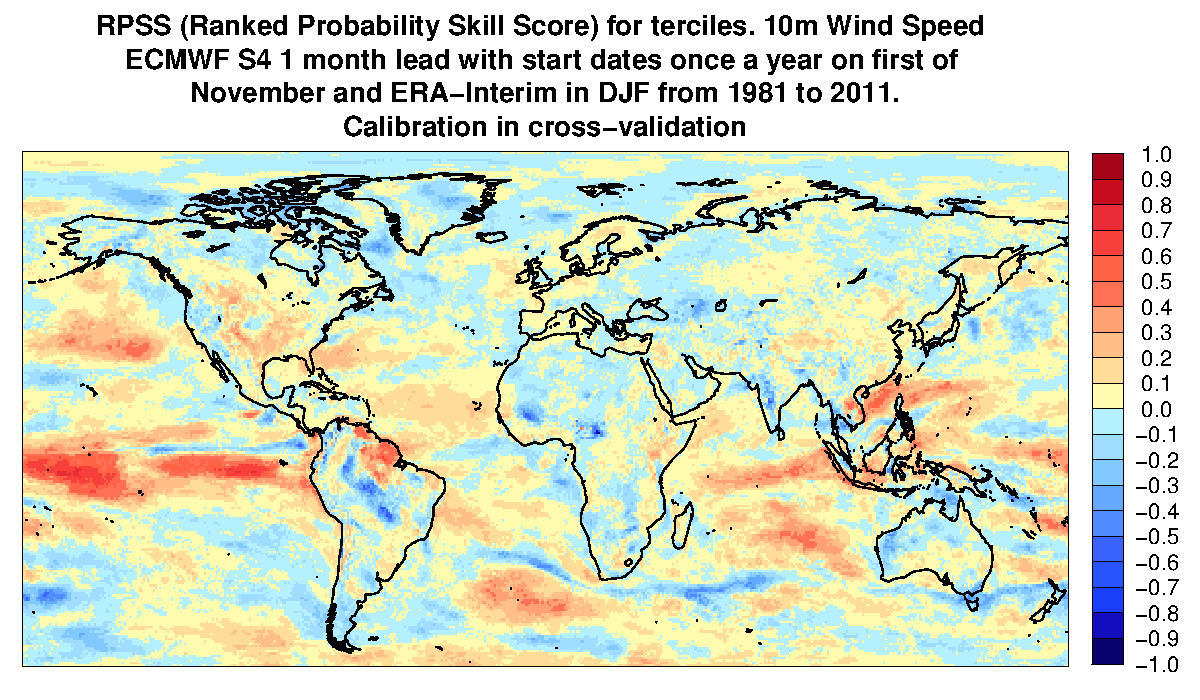Sidebar
Table of Contents
While knowledge transfer in climate modelling is common within this field, technology transfer is a less developed area. There are few examples in industry and society where climate forecasts are actively used to advance knowledge for decision making under climate uncertainty, despite that such information is of relevance to a variety of socio-economic actors. A new paradigm, known as climate services, has emerged that recognises the need for improved management of climate risk, and thus tries to bridge the gap between end-users and the climate community.
In response to the World Meteorological Organization (WMO) Global Framework for Climate Services, stating the need for climate risk management in key sectors of society, the Climate Services RG facilitates the communication and application of seasonal-to-decadal information related to the forecast and its corresponding skill for both climate averages and extremes. Their focus is on the energy and insurance sectors, where climate events have been seen to cause major economic damage.
The RG works in partnership with climate scientists and energy and insurance end-users, to disseminate state-of-the-art, seasonal-to-decadal climate information from research towards downstream, actionable decisions at local, national and global scales (Doblas-Reyes et al., 2013a). Partnerships have been initiated with several key individuals from the private, public and research areas via the EU FP7 projects CLIM-RUN, EUPORIAS, SPECS, RUCSS, DENFREE and NEWA, national project RESILIENCE and private projects with MAPFRE.
For the first time, probabilistic forecasts have been produced and disseminated to a number of stakeholders (Figure 1) via the development of a research, networking and communication platform for climate services e.g.www.arecs.org
RG Aim: To stimulate the use of probabilistic climate forecasting in key sectors of society.
RG Objective: To develop and disseminate climate risk management information based on seasonal to decadal forecasts, including decision support tools.
These objectives fall into three lines of approach:
1. User-defined research to develop climate prediction services a. Advance and tailor state-of-the-art models to the user needs for specific applications/impacts, e.g. wind and solar power energy supply impact, temperature-related energy demand impact b. Advance and tailor state-of-the-art postprocessing techniques for user-defined variables, timescales and resolutions
2. User-interaction platforms to tailor and disseminate knowledge, tools and technology transfer via services to companies, general stakeholders and the society a. Maintain current platforms and develop new ones e.g. decision support tools, alert systems, from prototypes to operational services b. Explore new data visualisations and communication techniques
3. User, societal and economic benefits via engagement, co-production and feedback from users, to guide the fundamental research lines of the Climate Forecasting Unit a. Guidance and training on provided services to public administrations and companies b. Increase international visibility of services to attract new users and establish feedback mechanisms to evaluate the service value
Introduction presentation to climate services based on climate forecasts: 20150130_climate_predictions_services.pdf
Figure 1: Winter skill (above) and forecast (below) for 10m wind speed
JPI Climate
JPI climate is a collaboration between 14 European countries working on several topics, e.g. Climate Services (http://www.jpi-climate.eu) and with intention to fund new transnational research initiatives. JPI Climate is taking concrete action on Access to Knowledge/Open Access/Open Data. Apart from the organisation of the workshop on Access to Climate Knowledge and Climate Services JPI Climate, a set of Guidelines on Access to Knowledge has been developed.
- Final version draft: Guidelines on Access to knowledge
Example: Extreme climate events like high-wind storms, or floods caused by heavy or persistent rainfall.
Some success in predicting this kind of events has been documented (Weisheimer et al.,2011b). Via private funding from the MAPRE Foundation, a report with the analysis of seasonal prediction of extreme precipitation over the Mediterranean basin and the frequency of Atlantic tropical cyclones has been carried out by the RG.
Communication and outreach
Here you will find the dissemination material of the ESS group


